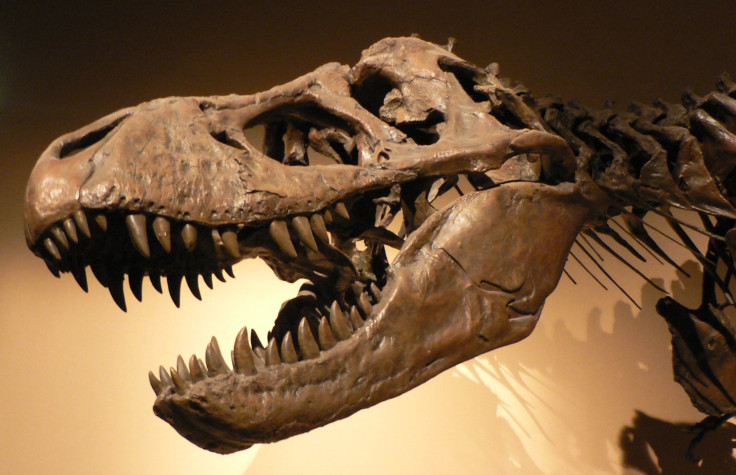T-Rex Soft Tissue Controversy Explained? How Iron Preserved 68-Million-Year-Old Dinosaur Tissue ‘Like Formaldehyde’

When scientists claimed in 2005 they’d recovered soft tissue from a 68-million-year-old Tyrannosaurus rex fossil found in Montana, skeptics jumped at the opportunity to cry foul. How exactly could soft tissue survive millions of years underground without decaying? They challenged.
The discovery triggered a controversy over the legitimacy of the scientists’ assertion. As Live Science noted, the proteins that make up soft tissue can’t survive more than a million years without degrading, even under the best conditions. Because microbes begin feasting on dead tissue almost immediately, most of the soft material is destroyed within just a few weeks.
Now, however, new evidence has surfaced that offers an explanation for how T-rex tissue could have been preserved for 68 million years. It involves hemoglobin, the iron-rich molecule that carries oxygen in red blood cells.
"Iron is necessary for survival, but it's also highly reactive and destructive in living tissues, which is why our bodies have proteins that transport iron molecules to where they are needed but protect us from unwanted reactions at the same time," Mary Schweitzer, a molecular paleontologist at North Carolina State University who discovered the apparent T-rex tissue, said in a statement. "When we die, that protective mechanism breaks down and the iron is turned loose on our tissues -- and that destructive process can act in much the same way formaldehyde does to preserve the tissues and proteins."
Schweitzer and her team conducted several studies of the soft tissue sample found in Montana, among other samples taken from Jurassic Period fossils, and determined the tissue was a collagen similar to that found in birds.
So how did collagen from a prehistoric Tyrannosaurus rex survive millions of years of wear and tear? According to the study, published in the journal Proceedings of the Royal Society B: Biological Sciences, iron is incredibly gifted at generating free radicals -- molecules that are highly reactive and have been linked to aging -- after death. Schweitzer told Live Science that these free radicals cause proteins and other cells to “tie in knots,” giving it the power of preservation “like formaldehyde.”
Nature World News reported that to test this theory, researchers took blood vessels and cells from modern ostrich bone and placed them in two different solutions – one was a mixture of red blood cells rich with hemoglobin, and the other was just water. They found that the tissue housed in water dissolved within days, but that the tissue sample kept in the hemoglobin solution was still recognizable two years later.
A dinosaur’s iron-rich blood coupled with an ideal environment for fossilization could explain how soft tissue was preserved for millions of years. Also, the fossils were recovered from sandstone, which is porous and has a knack of wicking away bacteria and other corrosive enzymes.
“We know that iron is always present in large quantities when we find well-preserved fossils, and we have found original vascular tissues within the bones of these animals, which would be a very hemoglobin-rich environment after they died,” Schweitzer said. “We also know that iron hinders just about every technique we have to detect proteins. So iron looks like it may be both the mechanism for preservation and the reason why we’ve had problems finding and analyzing proteins that are preserved.”
© Copyright IBTimes 2024. All rights reserved.












